A 'direct fusion drive' that uses nuclear fusion or a 'solar sail' that runs on energy from the sun - which one will reach the outer solar system object Sedna first?

'
[2506.17732] Feasibility study of a mission to Sedna -- Nuclear propulsion and advanced solar sailing concepts
https://arxiv.org/abs/2506.17732
Feasibility study of a mission to Sedna - Nuclear propulsion and advanced solar sailing concepts
https://arxiv.org/html/2506.17732v1
Among the celestial bodies that orbit the Sun, those that are farther away than Neptune are called trans-Neptunian objects. A typical example of a trans-Neptunian object is Pluto , which was considered the ninth planet in the solar system until 2006. Pluto was classified as a dwarf planet and was removed from the list of ninth planets, but Sedna is another trans-Neptunian object that may also be classified as a dwarf planet. Since Sedna was discovered in 2003, there has been long-standing discussion about the possibility of exploring the object.
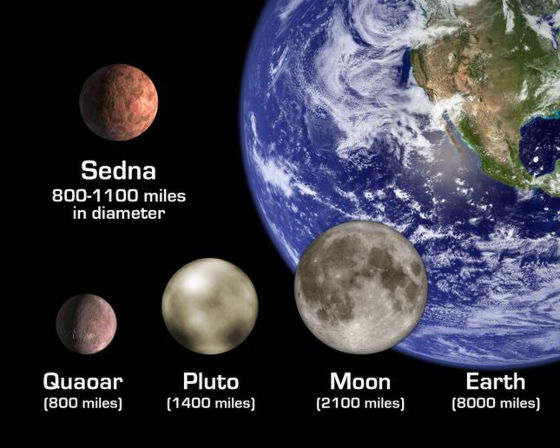
by NASA/JPL-Caltech
The advanced propulsion concepts expected to be used in exploring Sedna are 'rocket engines using
The survey assumes the use of a 'DFD rocket engine' and 'solar sail' for a one-way mission from Earth to Sedna.
The DFD rocket engine is a thermonuclear fusion propulsion system that uses the reaction of deuterium and helium-3 as fuel, and is a groundbreaking propulsion system that can generate both thrust and electricity from a compact fusion reactor. It is designed for use in a variety of missions, including manned missions to Mars and cargo transport to the outer solar system.
In this analysis, a 1.6 MW DFD rocket engine with constant thrust and specific impulse was assumed.
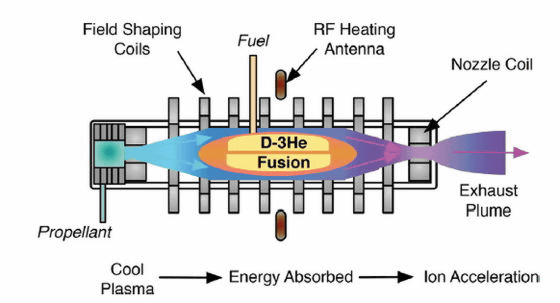
The trajectory design to Sedna when using the DFD rocket engine is as follows. The trajectory is assumed to be divided into three phases: the Earth escape trajectory phase, the interplanetary flight trajectory phase, and the final maneuver phase to rendezvous at Sedna.
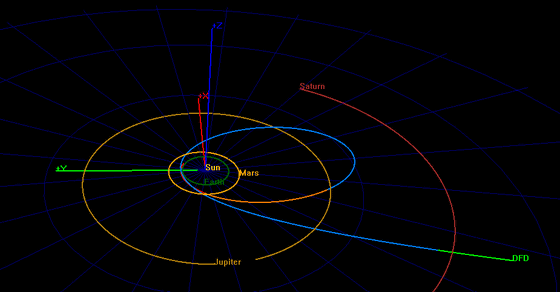
A high cruising speed is required to reach the outer solar system. A solar sail that can accelerate in the area near the sun can easily reach a high cruising speed. The key point of a solar sail is that it does not require on-board fuel because it uses electromagnetic radiation from the sun as its thrust source. Solar sails were first developed at NASA's Jet Propulsion Laboratory in the 1960s and were demonstrated by Pioneer 10 in 1973.
The graph below clearly shows that the efficiency of a solar sail improves as it gets closer to the sun. The vertical axis shows solar radiation pressure, and the horizontal axis shows the distance to the sun.
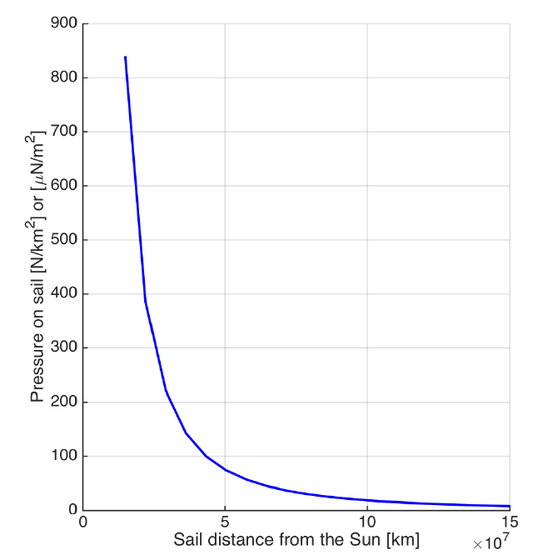
If a solar sail is used to fly to Sedna, a flyby of Jupiter can significantly increase the spacecraft's speed. A flyby, also known as gravity assist or slingshot maneuver, is a technique that changes the spacecraft's trajectory and speed as it approaches a planet. Rather than relying solely on onboard thrust, the spacecraft uses the planet's gravitational field to increase or decrease thrust. This method is highly anticipated for exploration within and beyond the solar system, as it allows the spacecraft to reach distant destinations while reducing fuel consumption.
The graph below shows the flyby options for Jupiter. The green line is the orbit around Earth, the black is the orbit around Jupiter, and the red, blue, and light blue lines are the orbits assumed for the flyby of Jupiter.
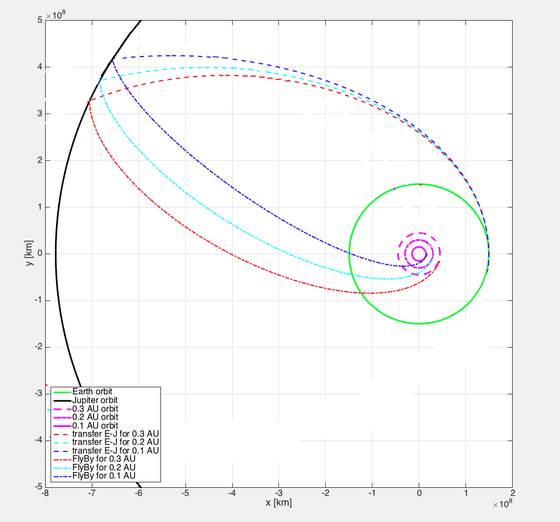
The research team estimated how long it would take for each of the DFD rocket engine and solar sail to fly to Sedna, assuming detailed numerical values for the DFD rocket engine and the solar sail. The results showed that the DFD rocket engine could reach Sedna in about 10 years (total thrust duration of 1.5 years), and the solar sail could reach Sedna in about 7 years. This result also takes into account the possibility of carrying payloads, the availability of power, and communication constraints.
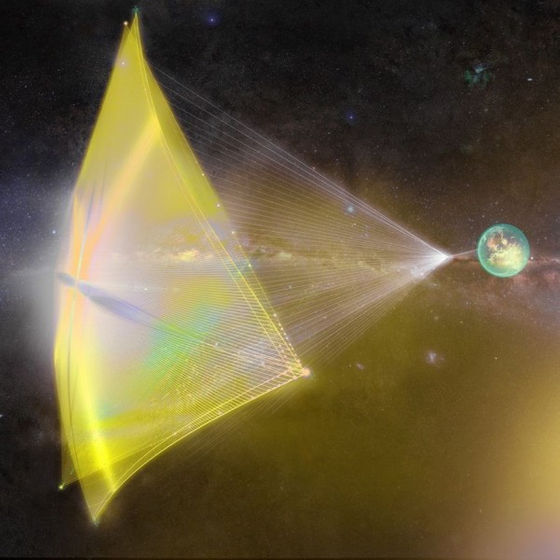
by Breakthrough Initiatives
'With a load capacity of over 100 kg and up to 1,500 kg of payload, the DFD rocket engine is a true game changer for any robotic mission to long-range targets,' the team said.
On the other hand, regarding the solar sail, 'Although the payload is limited by its small size (1.5 kg), it may benefit from continuing advances in miniaturization technology that open up new possibilities for deep space exploration. Small, low-mass scientific instruments will enable meaningful data collection within the strict mass constraints. Possible payloads include a small spectrometer for surface composition analysis, a small magnetometer to investigate Sedna's magnetic environment, and a highly sensitive camera for imaging in the visible and infrared spectrum. Although this mission profile is limited in terms of in-situ observation capabilities, valuable remote sensing and spectroscopic data may be obtained,' he said, pointing out that despite the strict constraints, meaningful data may still be collected.
Related Posts:
in Science, Posted by logu_ii







